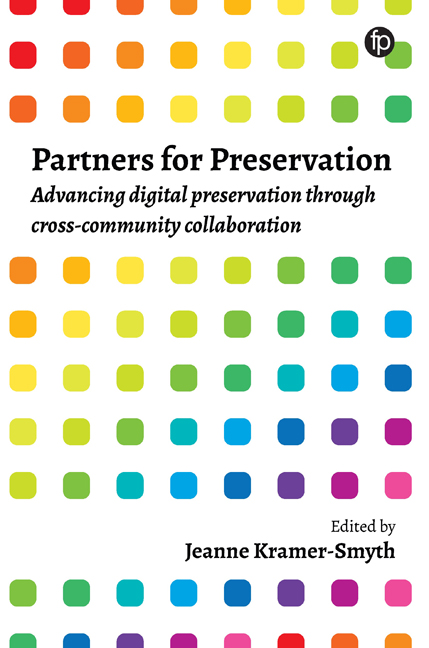Book contents
- Frontmatter
- dedication
- Contents
- List of figures and tables
- About the authors
- Foreword
- Introduction
- PART 1 MEMORY, PRIVACY AND TRANSPARENCY
- PART 2 THE PHYSICAL WORLD: OBJECTS, ART AND ARCHITECTURE
- 5 The Internet of Things: the risks and impacts of ubiquitous computing
- 6 Accurate digital colour reproduction on displays: from hardware design to software features
- 7 Historical building information model (BIM)+: sharing, preserving and reusing architectural design data
- PART 3 DATA AND PROGRAMMING
- Final thoughts
- Index
6 - Accurate digital colour reproduction on displays: from hardware design to software features
from PART 2 - THE PHYSICAL WORLD: OBJECTS, ART AND ARCHITECTURE
Published online by Cambridge University Press: 08 June 2019
- Frontmatter
- dedication
- Contents
- List of figures and tables
- About the authors
- Foreword
- Introduction
- PART 1 MEMORY, PRIVACY AND TRANSPARENCY
- PART 2 THE PHYSICAL WORLD: OBJECTS, ART AND ARCHITECTURE
- 5 The Internet of Things: the risks and impacts of ubiquitous computing
- 6 Accurate digital colour reproduction on displays: from hardware design to software features
- 7 Historical building information model (BIM)+: sharing, preserving and reusing architectural design data
- PART 3 DATA AND PROGRAMMING
- Final thoughts
- Index
Summary
Introduction
In this chapter I will talk about colour. Not colour in a general sense, but colour as it is rendered on a display. I am a colour scientist by profession. Most of my professional experience revolves around computer displays and improving visual experience on displays. In the imaging industry, many professionals with expertise in colour science typically work for manufacturers of electronic devices like smartphones, tablets, laptops, monitors, or even graphics processors and PC chipsets. Some work for camera or printer manufacturers. Besides the imaging industry, media and entertainment companies, and companies that manufacture paints, textiles, lighting products and so on and so forth, also employ colour scientists. The manufacturers need colour scientists and engineers to develop methods and algorithms (probably in collaboration with hardware and software engineers) to achieve superior colour experience. A lot has to do with the fundamentals of human vision and perception – how our visual system works and perceives colours. Not surprisingly, colour science is a multidisciplinary field involving physics, chemistry, physiology, statistics, computer science and psychology.
When creating and consuming a digital artwork, accurate colour reproduction on a display is one of the fundamental requirements. While cameras and printers play a vital role in archival and conservation work, specific focus of this chapter will be on displays and related topics.
I will start this discussion by describing why display colour accuracy is important, when it is important, and for who. Then, I will get into the details of how display technology has and is still evolving, and how that has impacted the notion of colour accuracy. In the next section, I will share some of my first-hand experiences of various challenges a device manufacturer faces in achieving high levels of display colour accuracy. Then comes the software aspects. I will try to familiarise you with some of the software features that can positively or negatively affect colour accuracy, so you are aware whether, when and how to use them. The section after that has some tips on how to ensure that colour accuracy is preserved during the digitisation of artwork, and afterwards during its consumption. Finally I consider some of the unsolved challenges we face today, and the outlook for the future.
- Type
- Chapter
- Information
- Partners for PreservationAdvancing Digital Preservation through Cross-Community Collaboration, pp. 101 - 122Publisher: FacetPrint publication year: 2018



